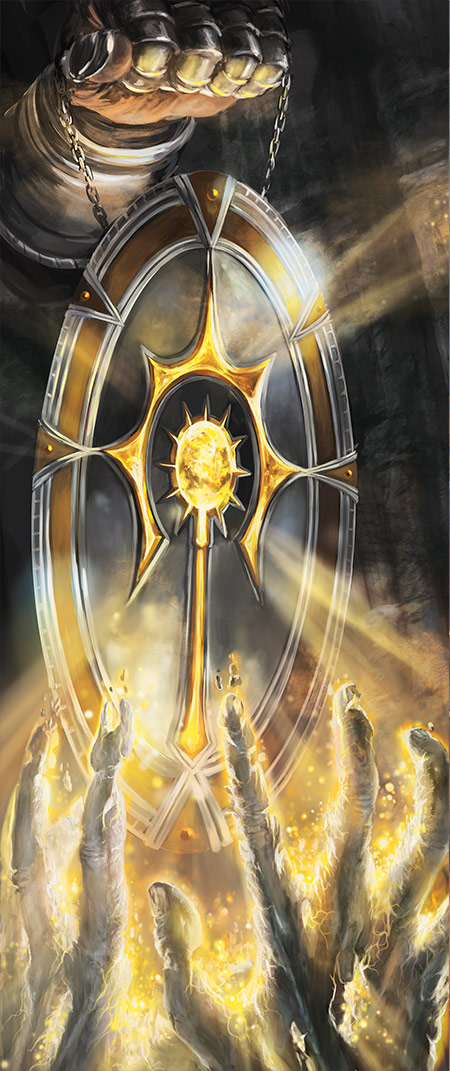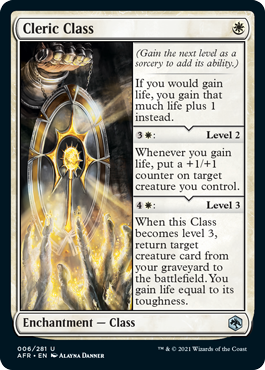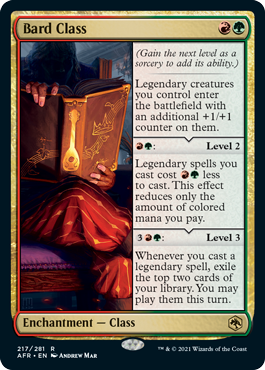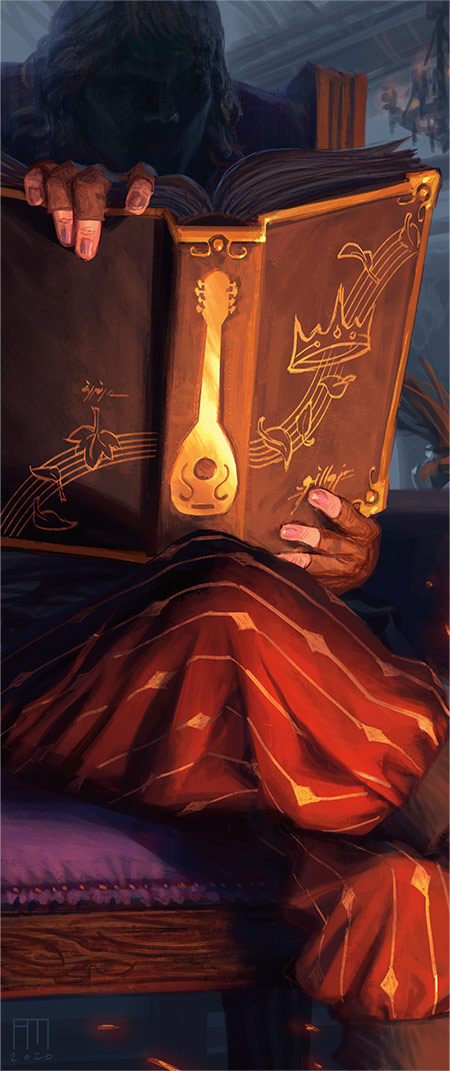Every Adventurer Needs a Class
Hello, Magic players! Melissa DeTora here to talk to you about Classes in Dungeons & Dragons: Adventures in the Forgotten Realms. I'm very excited to show off some cards from Magic: The Gathering's first crossover set. Designing this set was very fun and exciting for those of us working on it. Many of the people working on this set are big D&D fans, and it was awesome for those folks to incorporate another hobby they loved into the game they loved working on. As for me, I am not much of a D&D player, although I am familiar with the game thanks to old video games that I loved to play years ago such as Dungeons & Dragons: Dark Alliance and Baldur's Gate. However, I'm no expert, so please forgive me if any of my D&D comparisons aren't totally accurate.
When designing Adventures in the Forgotten Realms, we knew we wanted to represent classes in some way. Choosing your class is one of the first things you do when you sit down to play your first game of D&D. Classes define what your character can do in the game, determine their strengths and weaknesses, skills and abilities. As one of the most important and iconic parts of D&D, we wanted to represent each class's unique playstyle as a Magic card in Adventures in the Forgotten Realms.
How did we end up making Classes in Adventures in the Forgotten Realms? It all started very early in the design process. Whenever we are in early stages of designing a set, we brainstorm previous Magic mechanics and identify any mechanic that would make sense in terms of flavor in the world we're working on. Level up was one mechanic that was identified as being a flavorful mechanic for D&D. The name was very resonant, as leveling up was literally something you do in D&D! It was so on the mark for flavor and was added to the set early in design.

The level up mechanic originally appeared in Rise of the Eldrazi and had its own set of issues. First, it's wordy. Each level up card takes time to read and process, and it usually takes a few tries to understand the card fully. Second, it's hard to track. Not only do you have to track its levels, but you also track a new power and toughness and whatever static effects are applied to the card after each level. If that card was modified in any other way, such as with +1/+1 counters, that is additional tracking that makes playing the card more cumbersome. Lastly, there are not many dynamic play patterns a level up card can have due to the sorcery speed activation. You only have one choice with each card whether to level it up during your turn. Given these factors, if level up were to stay in the set, we probably wouldn't want it on too many cards.
In addition to all the baggage that came with level up, the mechanic didn't really feel like you were playing D&D. In D&D, you, the player, are the one leveling up, not your creatures fighting alongside you. The team was not happy with the initial mechanic and was looking for new ways to execute on the act of leveling up.
Separately, the team was looking to create cards that represent classes in D&D. These cards would likely be permanents that gave you a power that was representative of the class you chose. For example, a Wizard would be good at spell casting, so the Wizard Class card would likely be an instants- and sorceries-matter card.
After some iteration with the level up mechanic that was in the set, the team decided to marry the idea of Class cards with the level up mechanic. Leveling up Class cards felt truer to the game of D&D where the player was leveling up their character, with each new level adding more abilities to you, the player. And that is how Class cards were born!
Now, on to today's previews. First up, Cleric Class.

Figuring out what abilities to put on Classes mostly came down to brainstorming what each class could do, translating it to Magic's mechanics and gameplay, and ultimately making the most satisfying card to play. For Cleric Class, the most compelling abilities that provided a good mix of gameplay and flavor were life gain and reanimation.
As an uncommon, this card's most important role is a build-around for Limited decks. We had life gain themes and rewards in green and white, so Cleric Class's role was to be a payoff for a life gain deck. The first two abilities were very fun to play in draft, but we needed to find a third chapter to tie the card together.
Reanimation is an effect that we mostly see in black. White can do it, but it's most commonly used on small creatures. However, in D&D, clerics can raise the dead, and we wanted to represent that here, both to represent the cleric flavor and to give white more tools to use generally. In Limited, reanimation for any creature in the late game can give your life gain deck the extra push it needs once it runs out of gas and needs something to do with its mana. It worked well for the flavor of the cleric, but more importantly, it was a fun card to play in Draft and has several different play approaches.
The next card I'm going to show you today is Bard Class.

A bard is a performer and storyteller, a jack of all trades. They can fill in for most roles a D&D party may lack. That can be hard to translate to Magic gameplay, as a class that could reasonably do anything but had to feel different from the other classes. What resonated with the team most was the performing and storytelling, and they wanted to create a legendary creatures-matter card to represent the bard telling tales of legendary characters.
This was my favorite Class to play in Future Future League (FFL—our Standard playtesting league), along with former Play Designer Kazu Negri. I was a big proponent of a legends-matter deck in Standard built around ramping with Esika, God of the Tree, Magda, Brazen Outlaw, and Kinnan, Bonder Prodigy. The deck was great at generating a lot of mana but was fragile and not great at ending games. The deck still needed a card to tie the strategy together, and this was our shot at that role. For a card with three abilities, this card could fill the holes that this type of deck had. We gave Bard Class the static ability of making your creatures stronger. This made it so your creatures with weaker stats, like Magda, had a little more use in the later stages of the game.
The ability that we loved and that tied the card and deck together was the level three ability. A deck of mostly mana dorks can often suffer from drawing too many cards that generate mana, so having a way to refuel the battlefield once you've run out of cards in hand gave a deck like this more late-game power and made it more fun to play.

Thanks for reading, and I hope you've enjoyed a little insight into the Magic design process. I hope you have fun playing with your favorite D&D class as well as the rest of the set. Enjoy the remaining preview season!
Until next time,
Melissa DeTora
@MelissaDeTora
